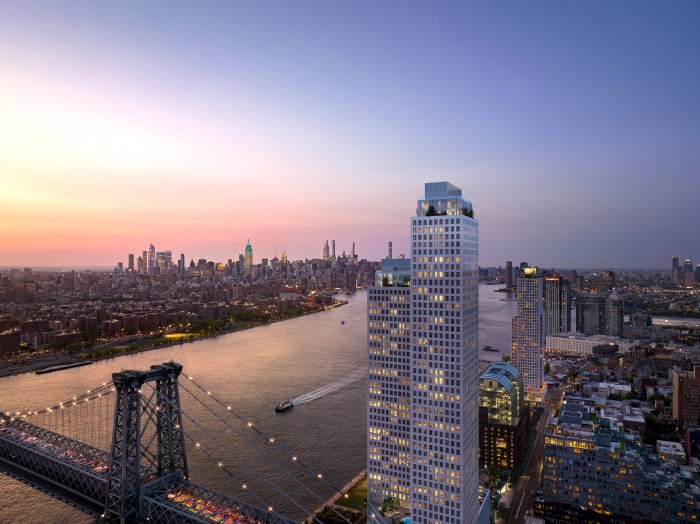To The Editor:
This letter is Save Chelsea’s response to two articles on the proposed Chelsea Market expansion that appeared in the November 2nd edition of Chelsea Now. We greatly appreciate Chelsea Now’s continuing coverage of this issue, and for publishing information about it that the community can read and respond to.
The first article, “Jamestown Properties: Chelsea Market Q&A,” printed Chelsea Now’s interview of Jamestown Properties’ representative Michael Phillips.
Jamestown has proposed to have the Special West Chelsea District enlarged to include Chelsea Market. This would allow the Market to be expanded by over a third of its existing square footage. The Special District zoning text lists as a primary aim to “ensure that the form of new buildings relates to and enhances neighborhood character and the High Line open space,” and repeatedly states its purpose to “ensure that light, air and views are preserved along the proposed High Line open space.”
Asked whether he felt Jamestown was pursuing a zoning change “contrary to the original intentions for this district,” Mr. Phillips responded that Chelsea Market was “originally asked to be in this special West Chelsea Zoning District, and I think for a variety of reasons, we weren’t. But it wasn’t because the city or the neighborhood deemed we shouldn’t be.” This isn’t the recollection of Ed Kirkland, of Community Board 4’s Chelsea Planning and Preservation Committee, who participated in the creation of the Special District at the time. Mr. Kirkland remembers that the Community Board prevailed in keeping Chelsea Market’s zoning unchanged.
According to Mr. Phillips interview, “Now we’re saying yes, in fact, we would like to be part of it and here’s the tradeoff. The tradeoff is whole block zoning for a huge massive city block in New York. Protection of the middle of the block, which in conventional wisdom today protects light in the air and it’s low and you put the height at the end and essentially you get better street light down the middle of the block and we go from a 5:1 to a 7:2 (FAR).”
Rightly called conventional by Mr. Phillips, such zoning has nothing to do with the uniquely High-Line-tailored Special West Chelsea District, which includes provisions like the High Line Transfer Corridor, “intended to enable the transfer of development rights from [italics ours] properties over which . . . the High Line passes and thereby permit light and air to penetrate to the High Line and preserve and create view corridors from the High Line bed.” By contrast, Jamestown would pile a quarter-million square feet of new office space right above the High Line, contradicting the Special District’s commitment to High Line open space, light and views.
It is our belief that it would do this in the name of its self-serving sham zoning strategy of moving bulk to the avenues. Although it will diminish everyone’s experience of the High Line, by building here Jamestown would create high-rent office space for itself with spectacular views up and down the High Line, and of the Hudson River. The Special District’s requirement that “the High Line shall remain open and unobstructed from the High Line bed to the sky . . .” is meant to protect the very views to the sky above the High Line that the huge bulk Jamestown’s proposed tower would replace.
As for the proposed FAR (floor area ratio, or the building’s total allowed square footage as a multiple of its lot size), Mr. Phillips’ claim that it will go from 5:1 to 7:2 doesn’t even use correct numeric FAR conventions and soft sells Jamestown’s formally presented proposal for an FAR increase of 5 to 7.5, a 50 percent increase in maximum allowed area.
Save Chelsea’s response to the Q & A section regarding the project’s benefits to the Community other than the onetime $17 million donation to the High Line is quoted in the November 16 issue of Chelsea Now (coverage of the November 10th Community Forum, by Scott Stiffler and Winnie McCroy).
The second November 2 Chelsea Now article, “Study estimates job, tax benefits of Chelsea Market,” fails even to mention that the report it presents as news was commissioned by Jamestown. As Appleseed’s website says: “Many of our assignments also involve the preparation and production of reports aimed at helping clients achieve specific public policy, community or business objectives.”
Appleseed’s study is said to factor-in the influx of tourists Jamestown’s project would bring, even though Jamestown told Community Board 4 in March that its project consists only of office space and a hotel specifically geared to business travelers.
Appleseed’s projection “that the project will create 1,200 construction jobs,” fails to note that such jobs would be created if Jamestown built its project on any other less sensitive site in the city. Clearly, Jamestown aims to enhance the value of a property it already owns, for its own benefit. Accommodating private commercial interests isn’t a justification for a zoning change. Zoning and historic designations of properties like Chelsea Market are in fact meant to protect the greater, publicly shared value of communities from market forces.
From the city’s perspective, the benefits Appleseed cites should rightfully be compared to the impact of not building Jamestown’s project, including the benefit to Ground Zero office developments that are already begging for tenants without the competition from the new office space Jamestown would create. The intangible value of an undiminished High Line and Chelsea Market are also overlooked by this study. It’s worth pointing out that creation of construction jobs was invoked as a justification for replacing Penn Station with Madison Square Garden, hardly a bargain in retrospect. And there’s no requirement for union construction workers to live in Chelsea, or New York City, for that matter.
Chelsea Now concluded the piece by again unquestioningly allowing Jamestown to state its zoning strategy: “Jamestown has said that the zoning changes will conform to requirements that restrict development to the avenues and preserve mid-block views, ensuring that no development happens over the historic portions of the market.” This let’s no one know that the “requirements” Jamestown would “conform to” aren’t the Department of City Planning’s, but were selfishly drawn up by Jamestown itself, and in fact fly in the face of the aims of the Special West Chelsea District in which Jamestown asks to be included.
Clearly, Jamestown plans only to opportunistically cherry-pick its provisions. [Save Chelsea’s full response to Jamestown’s statement that it will ensure “that no development happens over historic portions of the market can be found article by Scott Stiffler and Winnie McCroy covering the November 10th Community Forum.] Jamestown’s misstatements to Chelsea Now don’t inspire trust that it would respect the Market’s historic fabric at all.
If it’s granted the zoning change it seeks, Jamestown would presumably be free to take the far more economical route of adding new construction by tearing down swaths of Chelsea Market and building up taller from the ground.
The most troubling aspect of Appleseed’s report is its boosterism of Chelsea as a “magnet” for technology and media industries and “the heart of the city’s tech industry.” Chelsea is one of New York’s great residential communities and perhaps the world’s foremost art center. The Special West Chelsea District specifically states that its purpose is to encourage residential and arts-related uses. Office towers aren’t mentioned. Chelsea’s greatest potential worth lies in its desirability as a place to live or visit, not as a business district. From central Paris to Greenwich Village, the most desirable neighborhoods are primarily low-rise, residential and historically intact.
Jamestown’s proposal would irreplaceably extract the value of just such character from Chelsea, monetize it and hand it over to its investors. Chelsea will be left more like Midtown and less like Greenwich Village. Worst of all, it will be less like Chelsea.

















